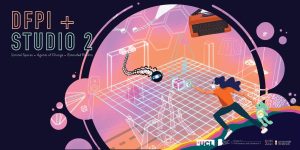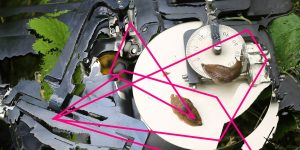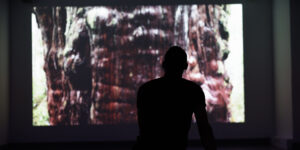Campus

Scales of Care
Studio2, University of Innsbruck (AT) and Design for Performance and Interaction, Bartlett School of Architecture, University College London (UK)
We imagine futures, many of them, and then we realize them. One thing these futures must all have in common is to “change not only the world we live in, but also ourselves”. Design for Performance and Interaction Studio2 MArch(s) studios are joining forces to explore first-hand in a collaborative exhibition how interdependence might unfold as kinship across institutions, disciplines, communities.

Digital Sensing
University of Applied Sciences Upper Austria (AT)
Digital Sensing examines the possibilities of scanning and perceiving the human body with current technologies such as 3D photography, AI scanning, and morphing. It then projects it back into physical space in the form of 3D-printed sculptures.

(In)Tangible Future(s)
Vorarlberg University of Applied Sciences, Faculty of Design (AT)
Taking the thought that in a post-anthropocentric future, ecological justice is concerned with justice between species as a starting point, this exhibition is conceptualized as an affective infrastructure enabling two kinds of experiences: the lack of eco- and interspecies empathy on “Planet A” and experiments fostering interspecies and non-human sensory dialogues.

Worlds in Progress
Art & Technology Studies Department of the School of the Art Institute of Chicago (US)
Challenged by Ars Electronica to imagine a world beyond today’s crises, artists from the Art and Technology Studies department at SAIC turn to the present and recent past, exploring the manufactured, digitized, artificial worlds we all create ourselves simply to continue living on Earth. Worlds In Progress finds planets and whole universes in the electronic spaces of today’s Earth.

Pixels from a Past Future
CINETic, National University of Theatre and Film (RO)
Pixels from a Past Future reunites works developed by students and teachers of the UNATC, from the MA of ITPMA and the MA New Media Design, works developed during 2021-2022. The works aspire to visualize empathy and closeness and to echo fading nature through capturing the presence of the visitor into the flow of data.

When the Wind Blows from Everywhere, We Make Art and (Sur)render Reality
Vilnius Academy of Arts (LT), MENE (LT), INSTITUTIO MEDIA (LT)
Right after the pandemic, young artists in Lithuania were hit by the war. The unrest in neighboring countries enabled them to work out how to calm down, find new ways of communication, come up with methods for resilience and survival. Let’s make art and (sur)render new virtualities to help Ukraine win. All in order to strive and continue making art. We already have Planet B more real than ever!

Patterns that Connect
Bauhaus University Weimar (DE)
Planet Earth is a shared habitat, where we humans strive to coexist with our fellow creatures and with machines. The exhibition *Patterns That Connect* proposes to rethink the “dance of agency” in relation to long-lasting evolution and customs, behavioral patterns that we can address and modify.

LAÑILAWAL
Universidad Austral de Chile (CL)
The oldest living tree on Earth could be the Lañilawal tree in southern Chile. The Alerce Milenario remains in the mode of a deferred time removed from the time scale of humans. How to show the pulse of this life? Bringing together a group of artists and scientists, the Lañilawal project is an approach to get a glimpse of this living time capsule with the purpose of understanding its message.

The Planet of Expanded Visions
Masaryk University, Faculty of Arts (CZ); Brno University of Technology, Faculty of Electrical Engineering and Communication (CZ)
Welcome to the planet made of expanded visions of the Vasulkas — the pioneers of electronic art. Enter the world of augmented memories of their visionary models of the expanded man-machine nature systems of the possible futures.

Shored, My Ruin(ed) City
Birmingham School of Architecture and Design, Birmingham City University (UK)
From libraries to ballrooms, ruins represent fragments that retain meaning through changing times. These are ever present in a “soft city” that is lived through digital space and consumed in popular media. Our transmedia process explores the fringes between this “soft city” and the real one to speculate on future visions of the city built on these ruined fragments.

